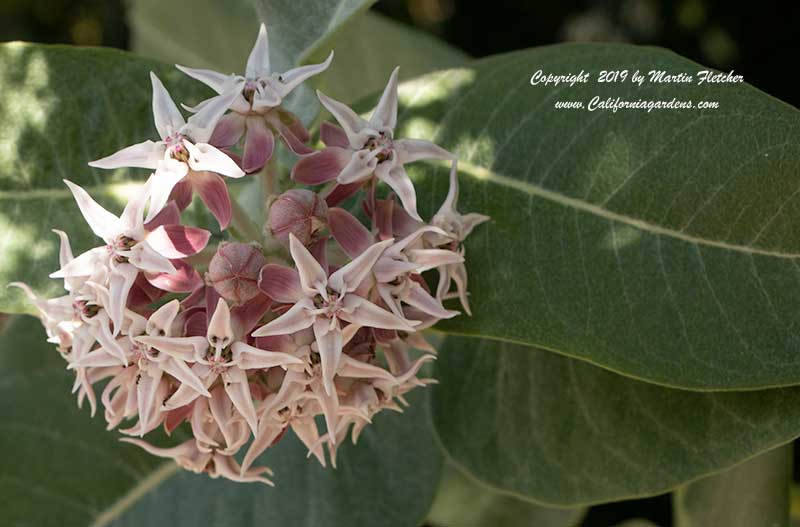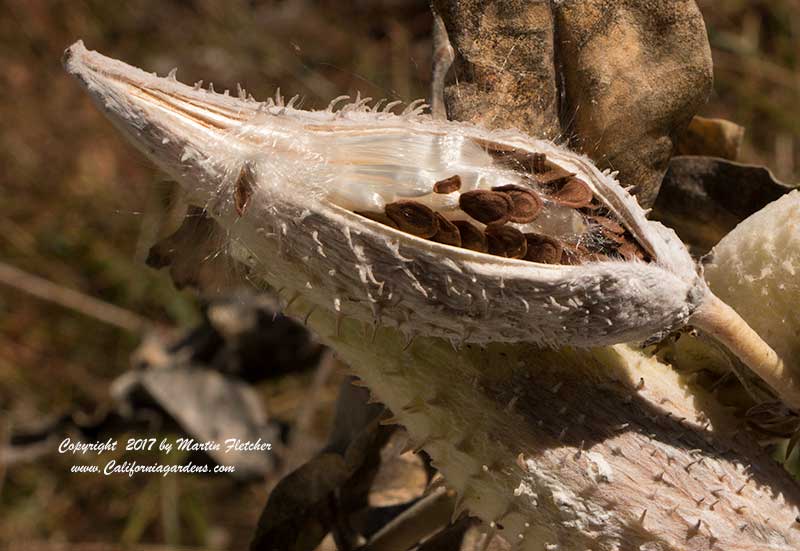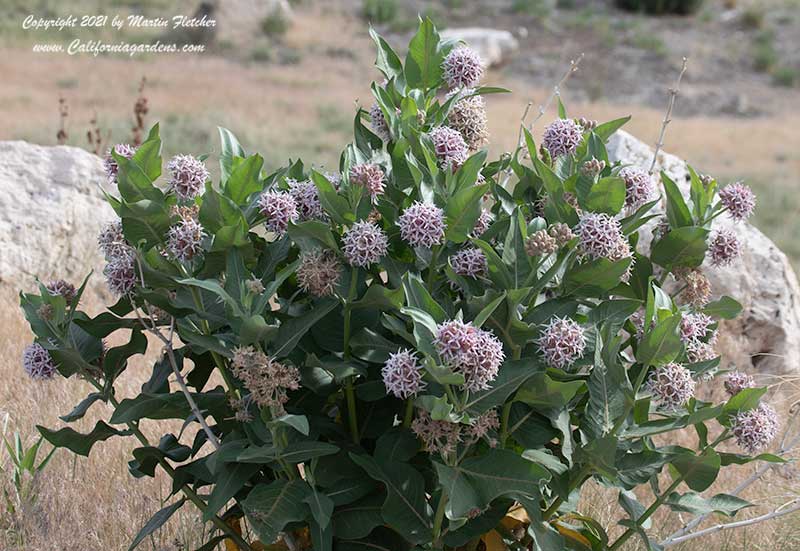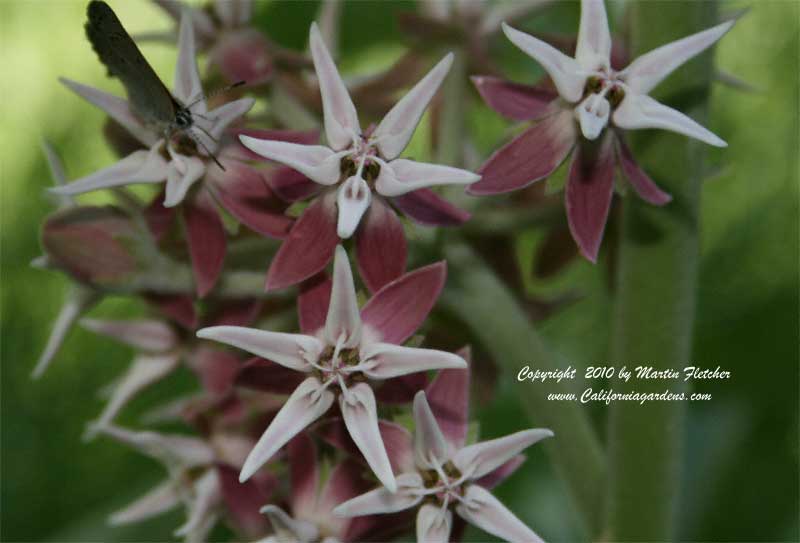Asclepias speciosa * Showy Milkweed
Showy Milkweed grows at middle elevations, 3000-5000 feet, in the Sierra Nevada Range. This photo of Asclepias speciosa was taken in Yosemite in one of the meadows on the Valley floor. Asclepias speciosa can take a moist or dry summer environment unlike many of the other Milkweed species, making the Showy Milkweed one of the easier California Natives to mix in the perennial bed. Asclepias speciosa produces fragrant pink and white flowers from late Spring through to Fall. Asclepias speciosa is a nectar and food source for the Acmon Blue, Gray Hairstreak Common Buckeye, Northern White Skipper, Hedgerow Hairstreak, Mormon Metalmark, California Common Ringlet, Great Purple Hairstreak, Giant Swallowtail, and Monarch butterflies. A local Blue is taking a meal. Asclepias speciosa is a great addition to the butterfly garden.

Flowers burst into bloom as Spring turns to Summer - Asclepias speciosa the Showy Milkweed. High resolution photos are part of our garden image collection.

Seedpod opening as Fall arives - Asclepias speciosa the Showy Milkweed. High resolution photos are part of our garden image collection.

Aspect shot with flowers and foliage of Asclepias speciosa the Showy Milkweed. High resolution photos are part of our garden image collection.

Flowers and foliage of Asclepias speciosa the Showy Milkweed. High resolution photos are part of our garden image collection.
Tarantula Hawks, Carpenter Bees and Yellow Faced Bumblebees feeding on nectar from Asclepias eriocarpa, Woollypod Milkweed. Milkweeds are important to so much more wildlife beyond butterflies. High resolution videos are part of our garden image collection.
Plants from the old Asclepidacea Family featured on this site. This is now considered a subfamily in the Apocynaceae Family or Dogbane Family. This is relevant because these plants are nectar and caterpillar food for the Monarch Butterflies:
Asclepias angustifolia * Arizona Milkweed
Asclepias californica * California Milkweed
Asclepias cordifolia * Purple Milkweed
Asclepias curassavica * Tropical Milkweed
Asclepias curassavica Red Butterflies * Red Butterflies Tropical Milkweed
Asclepias curassavica Silky Gold * Silky Gold Tropical Milkweed
Asclepias eriocarpa * Woollypod Milkweed, Indian Milkweed, Kotolo Milkweed
Aslepias erosa * Desert Milkweed
Asclepias fascicularis * Narrow Leaf Milkweed
Asclepias linaria * Pine Needle Milkweed
Asclepias speciosa * Showy Milkweed
Asclepias subulata * Rush Milkweed, Skeleton Milkweed
Asclepias tuberosa * Butterfly Weed
Other milkweed relatives:
Araujia sericifera * Bladder Vine, Cruel Vine, Moth Vine
Gomphocarpus fruticosus * Swan Milkweed, Narrow Leaf Cotton Plant
Gomphocarpus physocarpus * Family Jewels, Hairy Balls
Hoya carnosa * Wax Vine
